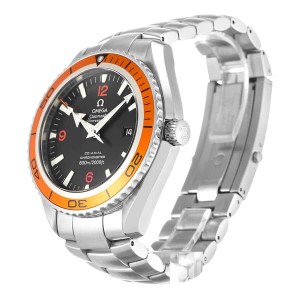Among the various complications of luxury watches, the chronograph is undoubtedly one of the most useful. In addition to its usefulness, the mechanical chronograph is one of the most popular watches. A modern replica Rolex Daytona sells for about three times its new retail price on the secondary market – simply because the watch is so popular. What’s more, certain rare vintage chronographs, such as the Rolex “Paul Newman” Daytona, can be worth well over six figures. So, what is a chronograph?
A chronograph is a timepiece that acts as a stopwatch and displays the regular 12-hour time. The ability to accurately time is something we can all take advantage of, whether we’re participating in any number of sports, going out for a run, or even trying to make dinner without setting off a smoke alarm.
This feature has been around for over a hundred years, first on pocket watches and later on by Breitling, which pioneered much of the early development of wristwatches. Today, almost every brand has at least one chronograph in its arsenal, and the feature has evolved into several different types over the years. 
So, this time, we’ll take a look at some of the most popular variations and explain what makes each one different. But first, as you delve into the world of mechanical stopwatches, you’ll often encounter a few terms.
As the name implies, a subdial is a smaller dial contained within the main dial area of the fake watch. On a chronograph, these additional displays are called upon to measure different elapsed time readings.
Generally speaking, chronographs come in two forms, a double dial, also known as a double register, and a triple dial, or triple register. These names relate to the number of subdials used in each watch. Bi-complex models use two subdials, one of which operates continuously as a standard seconds counter, while the other is usually a minute totalizer that only starts to run when the chronograph is in use.
For three-hand replica watches, three subdials are used, again one for the main second’s hand, the second for the chronograph’s minute counter, and the third to measure the elapsed hours.
As a matter of fact, a double-plate chronograph records up to one hour, while a triple-plate model has a maximum of 12 hours. With this in mind, there are often variations and exceptions to this rule, depending on the movement and the design of the watch. We will see more details next time.


